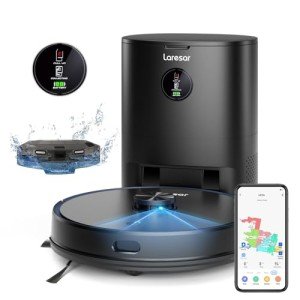
Self Cleaning Vacuum
FollowOverview
-
Founded Date July 2, 1913
-
Sectors Engineering and Manufacturing
-
Posted Jobs 0
Company Description
10 Meetups On Buy Robot Vacuum You Should Attend
Navigating the Market: A Comprehensive Guide to Buying a Robot Vacuum
On the planet of home automation, robot vacuums have actually ended up being an ubiquitous and highly sought-after device. These smart gadgets offer convenience, efficiency, and a hands-off method to maintaining a clean home. Nevertheless, with a huge selection of choices available, choosing the best robot vacuum can be a complicated task. This guide aims to supply a detailed introduction of the essential elements to consider when buying a robot vacuum, guaranteeing that readers make a notified and positive purchase.
Comprehending the Basics
A robot vacuum is an autonomous cleaning device developed to browse and clean floorings without direct human intervention. These devices utilize sophisticated sensing units and algorithms to draw up spaces, avoid challenges, and clean successfully. Some designs even offer features like remote control via smart device apps, voice commands, and integration with smart home systems.

Secret Factors to Consider
-
Spending plan
- Robot vacuums can range from budget-friendly designs to high-end, feature-packed devices. Identify your budget plan before beginning your search to limit your options.
- Entry-level models typically begin around ₤ 100, while premium models can cost upwards of ₤ 500.
-
Floor Type
- Different robot vacuums are designed for different floor types. Some are much better matched for hard floorings, while others excel on carpets.
- Tough Floors (Tile, Wood, Laminate): Look for models with strong suction and a water tank for mopping abilities.
- Carpets: Choose designs with effective motors and adjustable suction settings to handle thicker carpets.
-
Room Size and Layout
- Consider the size of your home and the complexity of its layout. Big homes might require a more effective and efficient model.
- Small Apartments: A compact model with basic functions might be sufficient.
- Homes with Multiple Rooms: Opt for a design with innovative mapping capabilities and several cleaning modes.
-
Cleaning Performance
- Suction Power: Higher suction power suggests better cleaning. Try to find models with at least 1000 Pa of suction for general cleaning.
- Brush Type: Rubber brushes are much better for getting pet hair and are less prone to tangling, while bristle brushes work on a variety of debris.
- Filter Quality: High-quality filters, particularly HEPA filters, are important for trapping allergens and dust.
-
Battery Life and Charging
- Battery Life: For large homes, a longer battery life is vital. A lot of designs use battery life ranging from 60 to 120 minutes.
- Auto-Return to Dock: This function guarantees that the robot vacuum returns to its charging dock when the battery is low, recharges, and resumes cleaning.
-
Navigation and Mapping
- LIDAR vs. Visual Navigation: LIDAR (Light Detection and Ranging) technology offers more exact and efficient mapping, but it can be more costly. Visual navigation utilizes electronic cameras and is typically less precise however more economical.
- Mapping Capabilities: Advanced models can create in-depth maps of your home, enabling you to set no-go zones and schedule specific cleaning times for each room.
-
Smart Features
- App Control: Most robot vacuums come with a smart device app that permits you to manage and keep track of cleaning sessions.
- Voice Control: Integration with smart assistants like Amazon Alexa, Google Assistant, or Apple Siri includes an extra layer of convenience.
- Set up Cleaning: Set particular times for the robot to clean, ensuring your home is constantly pristine.
-
Dustbin Capacity
- The size of the dustbin affects how typically you need to clear it. Larger bins are easier for bigger homes or those with animals.
- Self-Emptying Stations: Some designs come with self-emptying stations, which automatically clear the dustbin into a larger container, reducing upkeep.
-
Noise Level
- If you prepare to run the robot vacuum throughout the day, look for Robotvacuummops.Uk designs with lower noise levels. The majority of run between 50 to 60 decibels, which is equivalent to a peaceful conversation.
-
Consumer Support and Warranty
- Ensure the maker provides reputable client support and a generous guarantee. A lot of respectable brand names offer a minimum of an one-year warranty.
Leading Recommendations
-
iRobot Roomba i7+
- Pros: LIDAR navigation, self-emptying dustbin, app control, voice activation.
- Cons: Expensive, larger size may be a downside in small areas.
- Best For: Large homes, pet owners, tech lovers.
-
Eufy RoboVac 11S
- Pros: Affordable, good cleaning efficiency, compact design.
- Cons: Basic navigation, shorter battery life.
- Best For: Small apartment or condos, budget-conscious buyers.
-
Neato Robotics D7
- Pros: LIDAR navigation, powerful suction, large dustbin.
- Cons: No self-emptying station, greater cost point.
- Best For: Homes with numerous spaces, those requiring precise cleaning.
-
Roborock S5 Max
- Pros: Advanced mapping, effective suction, app control.
- Cons: Not as widely known brand name, some users report connectivity concerns.
- Best For: Tech-savvy users, large homes with complex layouts.
-
Dyson 360 Heurist
- Pros: Excellent suction, robust construct, advanced navigation.
- Cons: Very pricey, minimal variety of settings.
- Best For: High-end users, those requiring top-tier cleaning efficiency.
FAQs
1. Are robot vacuums efficient?
- Yes, robot vacuums are typically efficient, especially for everyday maintenance cleaning. They can manage most common household debris, consisting of dust, hair, and little particles.
2. Can robot vacuums tidy carpets?
- Yes, many robot vacuums are designed to clean carpets. Look for designs with adjustable suction power and strong motors to guarantee they can manage thicker carpets.
3. How typically should I run my robot vacuum?
- For best outcomes, run your robot vacuum a minimum of when a day. This assists keep your floorings clean and lowers the work throughout deep cleaning sessions.
4. Can I control my robot vacuum with a mobile phone app?
- A lot of contemporary robot vacuums include smart device apps that enable you to manage and set up cleaning sessions, monitor efficiency, and receive alerts.
5. Are robot vacuums loud?
- Robot vacuums are usually quieter than traditional vacuums, operating at around 50 to 60 decibels. However, some designs can be louder, so examine the noise level before acquiring.
6. Do robot vacuums get stuck quickly?
- Advanced models with LIDAR or visual navigation are less likely to get stuck, however it can still happen. Routinely look for challenges and guarantee the robot has adequate clearance to navigate.
7. How long do robot vacuums last?
- With proper maintenance, a robot vacuum can last 3 to 5 years. Routine cleaning of brushes and filters, and prompt battery replacements can extend its lifespan.
8. Can I utilize a robot vacuum with family pets?

- Yes, numerous robot vacuums are particularly developed to handle pet hair. Look for designs with rubber brushes and powerful suction.
Picking the right robot vacuum involves balancing your budget plan, home size, and particular cleaning requirements. By considering the aspects detailed in this guide, you can discover a design that fits your way of life and makes sure a tidy, well-kept home. Whether you’re a tech lover or a budget-conscious buyer, there’s a robot vacuum out there that’s ideal for you. Happy shopping!
Extra Tips
- Regular Maintenance: Keep your robot vacuum tidy and properly maintained to guarantee optimum efficiency. Frequently examine and clean the brushes, filters, and sensing units.
- Challenge Avoidance: Remove big challenges and ensure there suffices clearance for the robot to browse. This will prevent it from getting stuck or destructive itself.
- Test Before Committing: If possible, try a design before buying. Lots of sellers offer in-store demonstrations or trial periods.
- Read Reviews: Check online evaluations and ratings to get insights from other users who have experience with the design you’re considering.
By following these ideas and thinking about the essential elements, you can make an educated choice and enjoy the convenience and effectiveness of a robot vacuum.